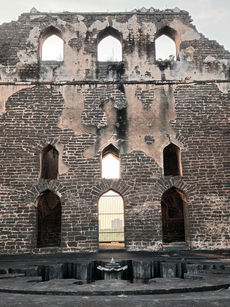Clerestory windows
.jpg)
Clerestory windows are those windows that are above eye level. Their purpose is to allow light to enter and also enable good ventilation.
List of contents
1. Guidelines for incorporating clerestory windows
Design of the clerestory windows
Select clerestory window designs that harmonize with the building's architectural style. Click here to see different clerestory window designs.
Sizing and Quantity
Calculating the number and size of clerestory windows involves considering several factors related to the building's design, and purpose.
Building Volume: Calculate the total volume (cubic meters or cubic feet) of the interior space you intend to illuminate and ventilate.
Desired Illuminance: Determine the desired level of natural daylight in the interior space.
Natural Ventilation Needs: Assess the required airflow for maintaining comfortable indoor temperatures.
Solar Heat Gain and Glare: Evaluate the potential for solar heat gain and glare from direct sunlight. Consider shading solutions, such as overhangs or window treatments.
Window Size and Placement: Select the size and placement of clerestory windows to achieve the desired illuminance and ventilation. Balance the size and number to distribute light and airflow evenly within the space. while determining the placement of the windows. Consider factors such as sun path and prevailing winds.
Consider Solar Angles: Analyze solar angles throughout the day and seasons to determine the orientation and height of clerestory windows. This will help minimize overheating and glare.
Building Orientation:
Align the building's orientation to maximize the benefits of clerestory windows, considering the path of the sun and local wind patterns.
Guidelines
Types of clerestory windows in Bidar.
Ventilation
Clerestory windows provide ventilation and are effective in passive energy design. Because warm air rises it is beneficial to use clerestory windows near the ceiling to allow the warm air to escape. It is also possible to create a kind of chimney effect or cross ventilation by bringing in cool air from a low window on the opposite side of the room.
Daylighting
Clerestory windows are positioned high on the wall, allowing natural light to penetrate deep into a building's interior. This can help reduce the need for artificial lighting during the day, saving energy and reducing electricity costs. Since clerestory windows are on a roofline, they provide privacy while allowing natural light into the home.
Thermal comfort
During cold winter months, the sun is placed lower in the sky, at just the right angle (in relation to the window) to warm up the room with natural sunlight. During hot summer months on the other hand, the sun is high in the sky, which in combination with appropriate eaves or external shading can prevent the hot sun rays to enter and heat up the house.
How do clerestory windows work?
When air becomes warm, it's density decreases, and it moves up. It escapes through the clerestory windows. This creates a vacuum and draws in fresh cool air through doors and windows in the lower level.
How do clerestory windows work?
















